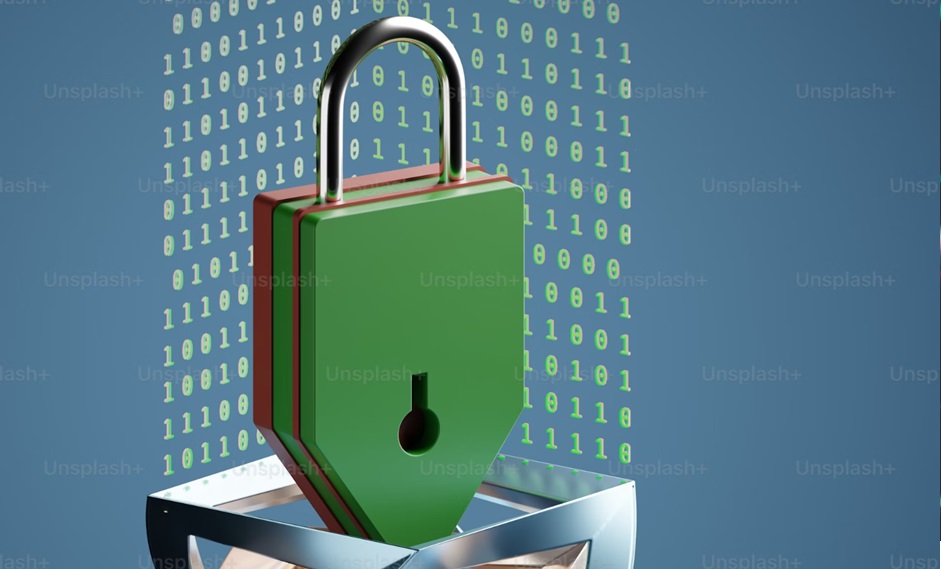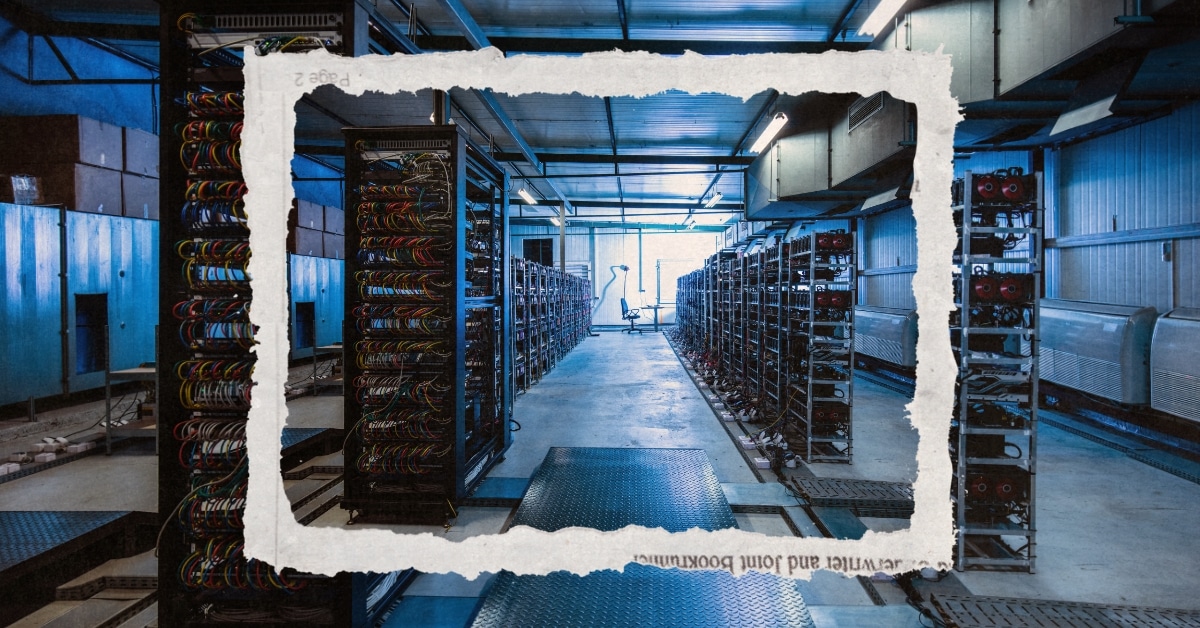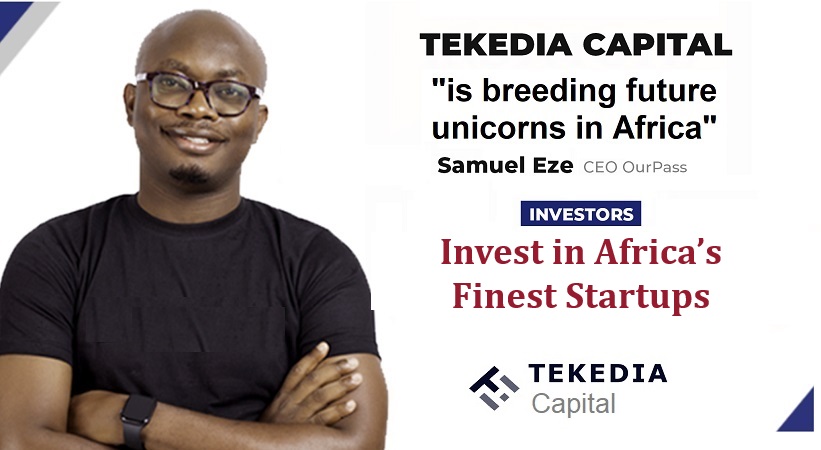News
Cos’è un portafoglio crittografico e come funziona? Tutto ciò che devi sapere

I nostri autori e redattori hanno utilizzato un sistema interno piattaforma di generazione del linguaggio naturale per assistere con parti di questo articolo, consentendo loro di concentrarsi sull’aggiunta di informazioni che siano particolarmente utili. L’articolo è stato esaminato, verificato e modificato dal nostro staff editoriale prima della pubblicazione.
Un portafoglio di criptovaluta è un luogo in cui conservare le tue chiavi per criptovaluta come Bitcoin, Ethereum o una delle migliaia di altre. Come un portafoglio fisico, un portafoglio di criptovaluta digitale fornisce un luogo in cui proteggere la tua valuta e un mezzo per accedervi quando vuoi usarla.
Ecco come funzionano i portafogli crittografici e le cose più importanti che devi sapere sui portafogli digitali.
Cos’è un portafoglio di criptovalute?
Un portafoglio di criptovaluta è un luogo in cui conservare le chiavi di transazione per il tuo criptovalutasia online che su un dispositivo fisico. Poiché la valuta virtuale esiste solo nella rete crittografica decentralizzata che la gestisce e la traccia, anche il tuo portafoglio crittografico deve essere in grado di interagire con quella rete.
Mentre i professionisti dicono “portafoglio” per descrivere ciò che protegge la tua criptovaluta, è più corretto pensare che sia un contenitore di chiavi per un indirizzo virtuale in cui vengono attribuiti i tuoi averi. Nel registro distribuito di qualsiasi criptovaluta, ovvero la ricevuta corrente di ogni transazione nella valuta, il portafoglio comunica al sistema in rete che qualsiasi criptovaluta inviata a questo indirizzo appartiene al proprietario di questo portafoglio.
In effetti, non puoi effettuare transazioni in criptovalute senza un qualche tipo di portafoglio digitale. Devi semplicemente avere un posto che ne indichi la proprietà, a differenza delle banconote fisiche, che potrebbero letteralmente fluttuare in giro. Quindi, qualsiasi posto che offra la possibilità di fare trading di criptovalute, ad esempio, exchange come Base monetaria e app di pagamento come Applicazione di contanti E Pagamento tramite PayPal — hanno un portafoglio di base, anche se potrebbero non offrire i portafogli più sicuri o altre funzionalità specializzate.
Detto questo, se acquisti criptovalute tramite un broker potresti non essere in grado di detenerle effettivamente tu stesso, ciò che gli appassionati chiamano “autocustodia”. Un brokeraggio come Robin Hood O Il webbull lo conserverà finché non sarai pronto a venderlo e non potrai spostarlo “off-chain” nel tuo portafoglio digitale o effettuare transazioni in criptovaluta. Dovrai convertirlo in dollari prima di spenderlo.
In genere, se il brokeraggio o lo scambio di criptovalute ha la custodia dell’asset, allora ha la responsabilità di mantenerlo. Se sposti la tua criptovaluta su un portafoglio, potresti essere l’unico responsabile della salvaguardia delle tue monete. Quindi, se perdi le tue chiavi di accesso (il tuo portafoglio), potresti perdere la tua criptovaluta.
Perché i portafogli crittografici sono utili
I portafogli crittografici offrono una serie di vantaggi, anche se non sono privi di svantaggi:
Vantaggi dei portafogli crittografici
- Capacità di effettuare transazioni: Un portafoglio digitale ti consente di riscuotere pagamenti da altri e funge da luogo in cui conservare le tue chiavi di pagamento in modo da poter pagare gli altri. Potrebbe sembrare come le app di pagamento come CashApp, Pagamento tramite PayPal O Venmoche puoi utilizzare come valuta normale.
- Può prendere in custodia le monete: Con i portafogli puoi “auto-custodire” le monete, prendendole da un exchange e conservandole tu stesso, a volte utilizzando un dispositivo fisico che può essere disconnesso da Internet, creando una protezione potenzialmente maggiore dagli hacker.
- Potrebbe avere una maggiore sicurezza: I wallet più avanzati possono offrire maggiore sicurezza e funzionalità specializzate rispetto a un wallet fornito con un’app di pagamento. Un wallet digitale personale può essere controllato dall’utente e quindi non è esposto a minacce su larga scala come l’hacking o persino frodi vere e proprie da parte di un exchange di criptovalute che potrebbe rubare i beni dei clienti.
Questa configurazione significa che solo tu potresti essere responsabile della salvaguardia dei tuoi possedimenti in criptovaluta. Per molte persone, questa caratteristica è un vantaggio, poiché non devi affidarti a una terza parte. Tuttavia, questa configurazione espone anche i detentori di criptovaluta al serio rischio di perdere il portafoglio e le loro chiavi.
Svantaggi dei portafogli crittografici
- Soggetto a furto o smarrimento: Proprio come un portafoglio reale, se perdi un portafoglio digitale o se viene rubato, potresti perdere tutto ciò che conteneva. Quindi potresti perdere un portafoglio crittografico fisico o semplicemente perdere la password del portafoglio, e perdere la crittografia associata al portafoglio. Detto questo, alcuni servizi potrebbero aiutarti a recuperare le password perse.
- Soggetto a distruzione o degradazione: Un portafoglio fisico potrebbe essere soggetto al degrado dei dati in esso contenuti o addirittura alla distruzione per altri motivi.
- Potrebbe rendere più difficile l’utilizzo delle criptovalute: Alcuni wallet sono pensati per essere come Fort Knox, impenetrabili, ma questo li rende più difficili da usare per le transazioni, quando devi connetterti con altri. E alcuni wallet potrebbero non essere utilizzabili con certi tipi di monete. Altri tipi di wallet, in genere wallet software, sono fatti per l’usabilità ma sono generalmente meno sicuri. Quindi sicurezza e usabilità potrebbero essere in contrasto tra loro qui.
I portafogli crittografici sono sicuri?
In genere, i portafogli crittografici sono sicuri, ma diversi tipi di portafogli potrebbero essere più sicuri di altri. I portafogli hardware, che consentono di disconnettersi da tutte le interazioni elettroniche, offrono l’alternativa più sicura, mentre i portafogli software rendono le criptovalute più utilizzabili per le transazioni.
Ma i portafogli software sono buoni solo quanto la loro programmazione, e gli hacker sono sempre alla ricerca di punti deboli nella sicurezza dei broker e degli exchange di criptovalute. Quindi la protezione offerta dai portafogli software dipende in larga misura dalla qualità del portafoglio stesso.
Oltre a questo problema, tuttavia, i truffatori cercano anche modi per truffare le persone attraverso “l’ingegneria umana”. Vale a dire, potrebbero provare a far scaricare virus ai proprietari di wallet o a prendere decisioni errate, data la novità della tecnologia crittografica e l’ignoranza o l’avidità degli utenti.
Nessun portafoglio crittografico al mondo può proteggerti dal rischio di cedere i tuoi beni, accidentalmente o tramite l’inganno di malintenzionati.
Hai bisogno di un portafoglio per le criptovalute?
Se intendi effettuare transazioni in criptovaluta, avrai bisogno di un portafoglio. I posti in cui puoi effettuare transazioni in criptovaluta solitamente ti forniscono un’app di pagamento che può fare le cose di base. Quindi sarai in grado di inviare pagamenti ad altri e ricevere pagamenti da loro.
Allo stesso modo, se intendi auto-custodire, incluso il ritiro delle tue monete “off chain”, allora avrai bisogno di un portafoglio per farlo. Alcune persone usano un portafoglio hardware (più avanti) per ridurre il rischio di hacking.
Se intendi fare trading solo di criptovaluta, non avrai bisogno di un portafoglio per conservarla. L’exchange o il broker la conserveranno per tuo conto e poi, quando sarai pronto a fare trading, potrai piazzare il tuo ordine.
Tipi di portafogli crittografici
In genere, i portafogli crittografici si dividono in due categorie: portafogli hardware, o portafogli freddi, e portafogli software, o portafogli caldi. migliori portafogli crittografici offrono una varietà di funzionalità.
Portafogli freddi contro portafogli caldi
Un cold wallet è un portafoglio che in genere si basa su un dispositivo fisico, l’hardware, per proteggere la tua valuta digitale. Potrebbe assomigliare a una chiavetta USB con funzioni specializzate per gestire e conservare le tue monete. Contiene le tue chiavi di criptovaluta che ti consentono di effettuare transazioni nella valuta e possederla. Quando hai bisogno di effettuare transazioni, puoi collegare il tuo portafoglio e spostare denaro.
Il vantaggio principale di questo portafoglio, ovvero ciò che lo rende “freddo”, è che può essere disconnesso da Internet. Poiché può essere disconnesso, la tua criptovaluta non è facilmente soggetta a furto elettronico. Naturalmente, sono comunque soggette ad altri tipi di perdita, tra cui lo smarrimento del portafoglio fisico, il furto fisico o il danneggiamento del dispositivo e la perdita della password del dispositivo.
I portafogli hardware sono quindi progettati per custodire in modo sicuro le criptovalute e meno per le transazioni.
Al contrario, un hot wallet è un portafoglio che puoi usare per effettuare transazioni in criptovaluta facilmente e in genere usa un software per salvaguardare i tuoi averi. Lo scopo dell’hot wallet è rendere le criptovalute facili da usare e il compromesso è che gli hot wallet potrebbero essere meno sicuri degli hardware wallet.
I portafogli software sono meno sicuri dei portafogli hardware perché sono connessi a Internet, esponendoli a potenziali attacchi informatici. Per questo motivo, potresti voler tenere solo ciò che intendi spendere in un portafoglio caldo, come faresti per un portafoglio fisico.
Esistono diversi tipi di portafogli caldi, a seconda di come esattamente vi si accede:
- Portafogli desktop: Puoi scaricare il software sul tuo computer e gestire i tuoi possedimenti in criptovalute da lì. Questo portafoglio raggiunge un equilibrio tra sicurezza e facilità d’uso, consentendoti di effettuare transazioni in criptovalute dal tuo portafoglio ma di andare offline quando non lo usi.
- Portafogli web: Un web wallet è spesso un plug-in software per il tuo browser web che può connettersi alla blockchain di una criptovaluta per effettuare una transazione. Puoi entrare e uscire per effettuare una transazione, ma la connessione a Internet lo rende meno sicuro di un cold wallet.
- Portafogli mobili: Un portafoglio mobile è una soluzione efficace per il tuo dispositivo mobile, spesso utilizzata per pagare beni o servizi a qualcuno.
Alcuni cold wallet e hot wallet possono essere integrati in modo da avere un’unica soluzione per entrambi, rendendo più semplice l’utilizzo di entrambi i tipi di wallet in un formato a te familiare e con cui ti trovi a tuo agio.
Portafogli di carta
Un altro tipo di portafoglio promette un alto livello di sicurezza a scapito dell’usabilità: un portafoglio cartaceo. Con un portafoglio cartaceo stampi le tue chiavi di accesso crittografiche e hai accesso a esse solo in forma fisica. Le tue chiavi vengono rimosse dal tuo portafoglio digitale e dalla rete, fornendo un alto livello di sicurezza da hacking e furto elettronici.
Lo svantaggio dei portafogli cartacei è che il tuo accesso alle criptovalute si basa sul fatto che tu tenga saldamente il foglio di carta con le chiavi. Se lo perdi, sei nei guai.
Qual è il tipo di portafoglio crittografico più sicuro?
Il tipo più sicuro di portafoglio crittografico dipende da cosa stai cercando di proteggerti. Ogni tipo di portafoglio ti espone a rischi diversi, anche se protegge da alcuni rischi.
Ad esempio, se stai cercando di proteggerti dall’hacking online, potrebbe avere senso usare un portafoglio hardware, in particolare se non intendi effettuare transazioni con le tue criptovalute. Ma ti espone ad altri rischi: perdere le tue chiavi se sono scritte o la perdita o il furto del dispositivo fisico.
I portafogli software si basano sulla sicurezza dell’app stessa per proteggersi dai furti, ma la sua connessione a Internet può esporre il portafoglio a rischi aggiuntivi, rispetto a un portafoglio hardware che può essere disconnesso. Tuttavia, il rischio potrebbe essere minimo nel complesso e valerne la pena se si prevede di effettuare transazioni.
Naturalmente, puoi dividere la differenza qui, proprio come faresti nel mondo reale. Non vai in giro con tutto il tuo patrimonio netto nel tuo portafoglio fisico. Tieni la maggior parte dei tuoi asset in un posto sicuro, ad esempio una banca, e esci solo con ciò di cui hai bisogno. Allo stesso modo, puoi tenere la maggior parte delle tue criptovalute in un portafoglio hardware mentre la tua paghetta è in un portafoglio software.
Come ottenere un portafoglio crittografico
Quando decidi che tipo di portafoglio acquistare, dovresti considerare i seguenti fattori:
- I tuoi bisogni: Qual è il tuo obiettivo con il tuo portafoglio di criptovalute? Hai bisogno di effettuare transazioni regolarmente o ti va bene semplicemente conservare la criptovaluta mentre aspetti che si apprezzi? Se intendi usare le criptovalute, un portafoglio caldo è un’opzione migliore, mentre un portafoglio freddo è migliore per coloro che hanno principalmente intenzione di conservare le proprie criptovalute. Naturalmente, puoi anche dividere la differenza.
- Costo: Un portafoglio hardware può costare tra $ 60 e $ 120. I portafogli software sono spesso scaricabili gratuitamente o sono forniti come funzionalità gratuita su migliori exchange di criptovalutema potrebbe addebitare una commissione per transazione.
- Supporto per alcune valute: Dovrai verificare che un portafoglio supporti le criptovalute che intendi detenere o utilizzare per effettuare transazioni. Bitcoin è la più grande e la più tipica, ovviamente, ma le monete meno popolari potrebbero non essere supportate.
- Convenienza: Se utilizzi un portafoglio, devi assicurarti che sia facile da usare.
- Caratteristiche: Dai un’occhiata ai wallet per assicurarti che abbiano altre funzionalità che stai cercando, oltre al supporto per valute specifiche. Ad esempio, se stai utilizzando sia wallet software che hardware, controlla se si integrano bene tra loro.
Il miglior portafoglio crittografico per te è quello che offre le funzionalità di cui hai bisogno, non necessariamente quello che ottiene il punteggio più alto in base a parametri oggettivi.
News
US Cryptocurrency Rules Delayed by ‘Never-Ending’ Lawsuits

Ripple CEO says cryptocurrency industry still seeking regulatory clarity from US
Speaking to Bloomberg News on Wednesday (July 17), Author: Brad Garlinghouse he said America is behind behind other countries which have already adopted cryptocurrency regulations.
“What we’re seeing, where it’s the UK, Japan, Singapore… even the European Union, more than two dozen countries have come together to provide a framework for cryptocurrency regulation,” Garlinghouse said.
“It’s frustrating that we as a country can’t get that regulatory framework in place. And instead, we have this never-ending lawsuit coming from the SEC that doesn’t really address the problem.”
Ripple has been the target of some of these legal disputes. Securities and Exchange Commission (SEC) sued the company in 2020, accusing it of conducting a $1.3 billion operation offering of unregistered securities tied to its XRP token.
However, last year a judge ruled that only Ripple’s institutional sales of XRP, not retail sales, violated the law, a decision widely seen as a victory for the cryptocurrency industry.
As PYMNTS noted at the time, that ruling has “far-reaching repercussions impact across the digital asset ecosystem, which has long maintained that its tokens do not represent securities contracts.”
However, Garlinghouse told Bloomberg on Wednesday that the company cannot wage multimillion-dollar legal battles over each token.
He spoke to the news agency from the Republican National Convention in Milwaukee, where the party is backing the candidacies of former President Donald Trump and Ohio Sen. J.D. Vance, both of whom are considered pro-cryptocurrency.
But Garlinghouse argued that cryptocurrencies “should not be a partisan issue,” and noted that he had recently attended a conference in Washington that included Democrats, including White House officials.
“I think they were there, listening to the industry… it was refreshing to start having that conversation,” she said.
President Joe Biden earlier this year he vetoed a measure which would have ended the SEC’s special rules for crypto-asset custodians. This legislation was supported by both the digital asset industry and the banking industry.
Ripple early this year donated $25 million to the cryptocurrency industry’s super PAC Fair Smoothiewith Garlinghouse stating at the time that such donations would continue every year, as long as the industry had its detractors.
Second Open SecretsWhich monitor spending For campaigns, the PAC has spent $13.4 million this year, much of it to help defeat Rep. Katie Porter’s (D-Calif.) U.S. Senate campaign.
News
The Future of Cybersecurity in the Cryptocurrency Industry

The cryptocurrency space has had a tumultuous journey, with its fair share of ups and downs. As we look to the future, one area that remains a constant focus is cybersecurity. The digital nature of cryptocurrencies makes them inherently vulnerable to cyber threats, and as the industry evolves, so does the landscape of potential risks.
In 2022, the cryptocurrency market faced significant challenges, with over $2 trillion in market value lost. This event served as a wake-up call for the industry, highlighting the need for robust cybersecurity measures. The future of cryptocurrency security is expected to see a shift towards more regulated and established institutions taking the reins of crypto technology and blockchain infrastructure.
The decentralized nature of cryptocurrencies offers numerous benefits, such as transparency and financial inclusion. However, it also introduces unique security challenges. The risk landscape is filled with threats such as hacking, phishing, ransomware attacks, malware, and social engineering. These threats not only lead to financial losses, but also damage the reputation and trust within the cryptocurrency ecosystem.
Mini-MBA Tekedia edition 15 ((September 9 – December 7, 2024) started recordings; Register today for discounts reserved for early bird customers.
Tekedia AI in Business Masterclass Opens registrations Here.
Join the Tekedia Capital Syndicate and IInvest in Africa’s best startups Here.
The decentralized nature of cryptocurrencies offers many benefits, but it also presents unique security challenges. Cyber risks such as hacking, phishing, and ransomware pose threats to the integrity of digital assets. The infrastructure that supports cryptocurrencies is not immune to vulnerabilities, including smart contract flaws and exchange hacks.
To address these vulnerabilities, the infrastructure that supports cryptocurrencies must be strengthened. Smart contract vulnerabilities, exchange hacks, wallet breaches, and flaws in the underlying blockchain technology are significant concerns that must be addressed to ensure the security and integrity of digital assets.
As cybercriminal tactics and techniques become more sophisticated, the cryptocurrency industry must stay ahead of the curve. The future will likely see more targeted attacks, exploiting weaknesses in infrastructure, networks, and human factors. This requires a proactive and multifaceted approach to cybersecurity.
To mitigate these risks, several measures must be adopted:
Strengthening security measures: Developers, exchanges, and wallet providers must improve security protocols, use strong encryption, implement multi-factor authentication, and conduct regular security audits.
Education and awareness: Users should be educated on best practices for protecting their digital assets, including using strong passwords, recognizing phishing attempts, and using hardware wallets for secure storage.
Looking ahead, the cryptocurrency industry is expected to see an increased focus on robust security measures. Blockchain projects and exchanges are likely to invest in advanced encryption techniques and decentralized storage solutions to protect user assets. The future impact of cyber risk on cryptocurrencies will depend on the collective efforts of stakeholders to address vulnerabilities and strengthen security measures.
Collective efforts by stakeholders in the cryptocurrency space are crucial to address vulnerabilities and strengthen security measures. While challenges persist, advances in cybersecurity technologies and practices offer hope for a more secure and resilient cryptocurrency ecosystem.
The future of cybersecurity in the cryptocurrency industry depends on finding a balance between innovation and regulation. It requires a collaborative effort from all parties involved, from developers to end users, to create a secure environment that fosters trust and growth in the industry. As we move forward, it is critical that lessons learned from past events guide the development of stronger security measures, ensuring the longevity and stability of cryptocurrencies as a vital part of the modern economic toolkit.
Like this:
Like Loading…
News
Bullish XRP and RLBK price predictions rise, outpacing the broader cryptocurrency market, prompting Shiba Inu holders to switch!

Bitcoin’s one-week surge from $60,000 has pushed other cryptocurrencies into an uptrend. However, for many altcoins, this trend has been temporary. Altcoins such as XRP and Shiba Inu (SHIB) have experienced price drops. However, Rollblock, a new altcoin on the Ethereum blockchain, has thrived during this period, attracting thousands of investors looking for long-term growth.
XRP’s Nearly 30% Growth Over Last Week Drops as Selling Pressure Increases
XRP is seeing further price decline as Ripple investors withdraw their profits from the token. The surge in XRP’s price to $0.64 in the past week has provided investors with a perfect opportunity to increase their returns in the short term. With the ongoing sell-off in XRP, XRP has jumped over 8% in the past day and is now trading at $0.59. However, analysts tracking XRP indicators predict that XRP could still extend its gains by over 30% in the coming weeks.
Shiba Inu (SHIB) marks its third consecutive day of losses
Shiba Inu (SHIB) is in a period of adjustment after a week of strong gains. In the last 24 hours, SHIB has seen a jump of over 7%, reflecting a natural market fluctuation. Analysts are observing a death cross on the Shiba Inu chart, which historically signals the potential for future opportunities as the market stabilizes. As investors explore new possibilities, some are diversifying into promising altcoins like Rollblock (RBLK) to strategically rebalance their portfolios and capitalize on the emerging trend.
Rollblock (RBLK) Up Another 7% as New Investors Join Pre-Sale
Rollblock (RBLK) has taken the cryptocurrency market by storm, having attracted investors from more popular altcoins like Shiba Inu (SHIB) and XRP. Rollblock’s growth is attributed to its utility in the $450 billion global gaming industry.
Rollblock aims to use blockchain technology to bridge the gap between centralized and decentralized gambling. With blockchain technology, Rollblock secures every transaction in its online casino, providing transparency and convenience to millions of players who are uncomfortable placing bets on other iGaming platforms.
This innovative use of blockchain technology in the industry has grown Rollblock to over 4,000 new users in less than two months. With plans to add sports betting, this number is expected to grow exponentially in Q3.
Rollblock uses a revenue sharing model that splits up to 30% of its casino’s weekly profits with token holders. This happens after Rollblock buys back $RBLK from the open market and uses half of it for rewards. The other half is burned to increase the price of $RBLK.
Rollblock price has seen four increases in the past month with $RBLK tokens now selling for $0.017. Analysts predict that at the current growth rate, Rollblock could increase by over 800% before the presale ends. For investors looking for a long-term token with growth potential, phase four is the best time to buy Rollblock before its price skyrockets!
Discover the exciting Rollblock (RBLK) pre-sale opportunities now!
Website:https://Rollblockpresale.io/
Social: https://linktr.ee/Rollblockcasino
No spam, no lies, just insights. You can unsubscribe at any time.
News
Texas Crypto Miners Turn to AI as Crypto Declines

As cryptocurrency mining becomes less profitable, Texas cryptocurrency mining companies are switching to supporting artificial intelligence companies.
Bitcoin miners, with their sprawling data centers and access to significant energy resources, are ideally suited for computationally intensive AI operations, and as cryptocurrency mining becomes less profitable, companies see this shift as a logical answer to their problems.
On Thursday, Houston-based Lancium and Denver-based Crusoe Energy Systems announced a multibillion-dollar deal to build a 200-megawatt data center near the West Texas city of Abilene to support advanced artificial intelligence applications such as medical research and aircraft design, CNBC reported. The plant represents the first phase of a larger 1.2 gigawatt project.
Lancium and Crusoe’s move into AI mirrors a broader trend among bitcoin miners. The combined market capitalization of the top U.S.-listed bitcoin miners hit a record $22.8 billion in June. Companies like Bit Digital and Hut 8 are diversifying into AI, with Bit Digital securing a $92 million annual revenue deal to supply Nvidia GPUs and Hut 8 raising $150 million to expand its AI data center.
But the growing popularity of these operations also presents challenges, particularly for the Texas power grid. Last month, the Electric Reliability Council of Texas announced that the state is expected to nearly double its energy production by 2030 to meet the high energy demands of data centers and cryptocurrency operations.
Lieutenant Governor Dan Patrick expressed concern about the projections.
“Cryptocurrency miners and data centers will account for more than 50% of the additional growth. We need to take a close look at these two sectors,” He wrote on Twitter/X. “They produce very few jobs compared to the incredible demands they place on our network. Cryptocurrency miners could actually make more money selling electricity to the network than they do from their cryptocurrency mining operations.”
Analysts predict significant growth in data center power capacity, which is expected to account for up to 9% of U.S. electricity consumption by 2030.
The operations also pose challenges for nearby cities. Earlier this month, TIME reported that a crypto-mining facility was seriously compromising the health of residents in the city of Granbury. TIME reported more than 40 people with serious health problems, including cardiovascular disease, high blood pressure and hearing loss. At least 10 of the residents needed to go to the emergency room or an urgent care facility.
The disturbances were caused by the extreme noise generated by the crypto-mining facility’s fans, which are used to keep the machines cool. While the proposed data center in Abilene would use liquid cooling systems, it’s still unclear whether the facility’s operations would pose a health risk to local residents.
-

 Nfts12 months ago
Nfts12 months agoShardLab Launches ZK-Based Tool for Digital Identity and NFT Vouchers
-

 News1 year ago
News1 year agoWallet recovery firms are abuzz as stranded cryptocurrency investors panic in the bitcoin boom
-

 Bitcoin12 months ago
Bitcoin12 months agoBitcoin, Ethereum, Solana and Cryptocurrency Markets Look Ready to ‘Send’ as Stars Align, According to Investor Chris Burniske
-

 Altcoins11 months ago
Altcoins11 months agoThree Altcoins Poised for Significant Growth in 2024: ETFS, OP, BLAST
-

 Altcoins11 months ago
Altcoins11 months agoAccumulate these altcoins now for maximum gains
-

 Nfts12 months ago
Nfts12 months agoOG Crypto Artist Trevor Jones Unveils Groundbreaking Collection of Ordinals | NFT CULTURE | NFT News | Web3 Culture
-

 Bitcoin12 months ago
Bitcoin12 months agoBillionaires are selling Nvidia stock and buying an index fund that could rise as much as 5,655%, according to some Wall Street analysts
-

 Videos8 months ago
Videos8 months agoKamala just won the boner! [Bad For Crypto]
-

 Videos1 year ago
Videos1 year agoLIVE FOMC 🚨 Could be CATASTROPHIC for Altcoins!
-

 Videos1 year ago
Videos1 year agoSTOCK MARKET FUD! ⚠️ [Why This Is GREAT For Bitcoin Traders!]
-

 Videos1 year ago
Videos1 year agoAttention: a historically significant BITCOIN signal has just appeared!
-

 News1 year ago
News1 year agoA Guide for Newcomers & Beginners – Forbes Advisor







